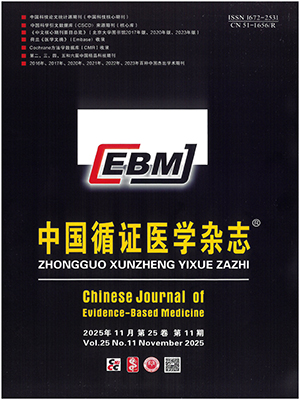| 1. |
王維亭, 郝春華, 湯立達. 臨床適應性設計及在新藥研發中的應用. 現代藥物與臨床, 2010, 25(5): 334-339.
|
| 2. |
于莉莉, 薛富波, 王素珍, 等. 臨床試驗適應性設計的反應變量-適應性隨機化方法簡介. 中國衛生統計, 2008, 25(5): 534-536,538.
|
| 3. |
劉甜甜. 臨床試驗隨機化方法的優化研究. 廣州: 南方醫科大學, 2018.
|
| 4. |
國家藥品監督管理局藥品評審中心. 藥物臨床試驗隨機分配指導原則(試行), 2021. Available at: https://www.cde.org.cn/main/att/download/e0dbbd6e531c314bcfd5ab5eb1817b12.
|
| 5. |
Thompson WR. On the likelihood that one unknown probability exceeds another in view of the evidence of two samples. Biometrika, 1933, 25(3-4): 285-294.
|
| 6. |
王雨寧, 徐暢, 鄒康, 等. 臨床試驗中適應性隨機化的應用. 中國循證醫學雜志, 2020, 20(5): 616-620.
|
| 7. |
Hu J, Zhu H, Hu F. A unified family of covariate-adjusted response-adaptive designs based on efficiency and ethics. J Am Stat Assoc, 2015, 110(509): 357-367.
|
| 8. |
Hu F, Rosenberger WF. The theory of response-adaptive randomization in clinical trials. Hoboken: John Wiley & Sons, 2006.
|
| 9. |
Soares JF, Wu CFJ. Some restricted randomization rules in sequential designs. Commun Stat Theory Methods, 1983, 12(17): 2017-2034.
|
| 10. |
Higham R, Tharmanathan P, Birks Y. Use and reporting of restricted randomization: a review. J Eval Clin Pract, 2015, 21(6): 1205-1211.
|
| 11. |
Rosenberger WF, Sverdlov O, Hu F. Adaptive randomization for clinical trials. J Biopharm Stat, 2012, 22(4): 719-736.
|
| 12. |
Hodges D. Design for the control of selection bias. Ann Math Stat, 1957, 28(2): 449-460.
|
| 13. |
Lachin JM. Properties of simple randomization in clinical trials. Control Clin Trials, 1988, 9(4): 312-326.
|
| 14. |
袁陽丹. 限制性和協變量適應性隨機化方法性能研究. 廣州: 南方醫科大學, 2020.
|
| 15. |
Wang T, Ma W. The impact of misclassification on covariate-adaptive randomized clinical trials. Biometrics, 2021, 77(2): 451-464.
|
| 16. |
Li X, Zhou J, Hu F. Testing hypotheses under adaptive randomization with continuous covariates in clinical trials. Stat Methods Med Res, 2019, 28(6): 1609-1621.
|
| 17. |
Zagoraiou M. Choosing a covariate-adaptive randomization procedure in practice. J Biopharm Stat, 2017, 27(5): 845-857.
|
| 18. |
Taves DR. Minimization: a new method of assigning patients to treatment and control groups. Clin Pharmacol Ther, 1974, 15(5): 443-453.
|
| 19. |
Baldi AA, Zagoraiou M. The covariate-adaptive biased coin design for balancing clinical trials in the presence of prognostic factors. Biometrika, 98: 519-535.
|
| 20. |
Qiao W, Ning J, Huang X. A clinical trial design with covariate-adjusted response-adaptive randomization using superiority confidence of treatments. Stat Biopharm Res, 2019, 11(4): 336-347.
|
| 21. |
Scordo MG, Pengo V, Spina E, et al. Influence of CYP2C9 and CYP2C19 genetic polymorphisms on warfarin maintenance dose and metabolic clearance. Clin Pharmacol Ther, 2002, 72(6): 702-710.
|
| 22. |
Rosenberger WF, Vidyashankar AN, Agarwal DK. Covariate adjusted response adaptive designs for binary responses. J Biopharm Stat, 11: 227-236.
|
| 23. |
Bandyopadhyay U, Bhattacharya R. An urn based covariate adjusted response adaptive allocation design. Stat Methods Med Res, 2012, 21(2): 135-148.
|
| 24. |
Proschan M, Evans S. Resist the Temptation of Response-Adaptive Randomization. Clin Infect Dis, 2020, 71(11): 3002-3004.
|
| 25. |
Hewitt CE, Torgerson DJ. Is restricted randomisation necessary. BMJ, 2006, 332(7556): 1506-1508.
|




